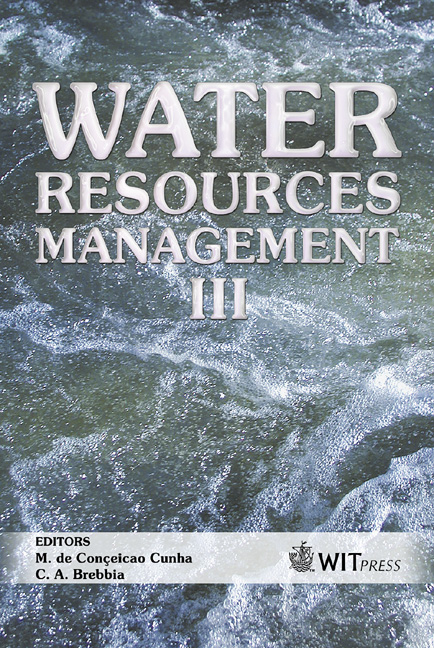Inhibition Of The Algal Bloom By Dissolution Of Limestone
Price
Free (open access)
Transaction
Volume
80
Pages
9
Published
2005
Size
527 kb
Paper DOI
10.2495/WRM050171
Copyright
WIT Press
Author(s)
H. S. Kim, S. K. Lee & G. Kim
Abstract
Limestone is one of the well-known insoluble salts. Yet it is a possible source of both calcium ions and carbonate ions which might act as an inhibitor of algal bloom in a lake. The calcium ions may drive the flocculation of algae by double layer suppression, while the carbonate ions may accelerate the seclusion of phosphate from a lake ecosystem by helping formation of sparingly soluble salts between phosphate and calcium ions. Therefore, in the lake of which the catchments area is rich in limestone, there seems to be a rare chance of algal bloom. There is evidence which supports the correctness of this hypothesis. In this paper comparison will be made for the water quality data of two man made lakes in Korea. Occurrence of the algal bloom has been observed every year for one lake, while it has not happened at all for the other lake, even though the water quality of both lakes is very much alike except for water hardness and alkalinity. The cause of the difference in the algal bloom occurrence is interpreted as a consequence of the difference in the hardness and alkalinity. The authors believe that this finding will serve for the effective lake management for the purpose of algal growth control. Keywords: algal bloom, limestone, lake management, hardness, alkalinity. 1 Introduction Eutrophication is one of the major concerns in lake water quality management. The implication of the processes for phosphorus removal and denitirfication in the wastewater treatment facilities is to endeavour to stop or retard the eutrophication of the receiving water body like lake or littoral area. Eutrophication means the abundance of nutrients like phosphorus and nitrogen necessary for the growth of algae [1]. If the eutrophication continues for
Keywords
algal bloom, limestone, lake management, hardness, alkalinity.





